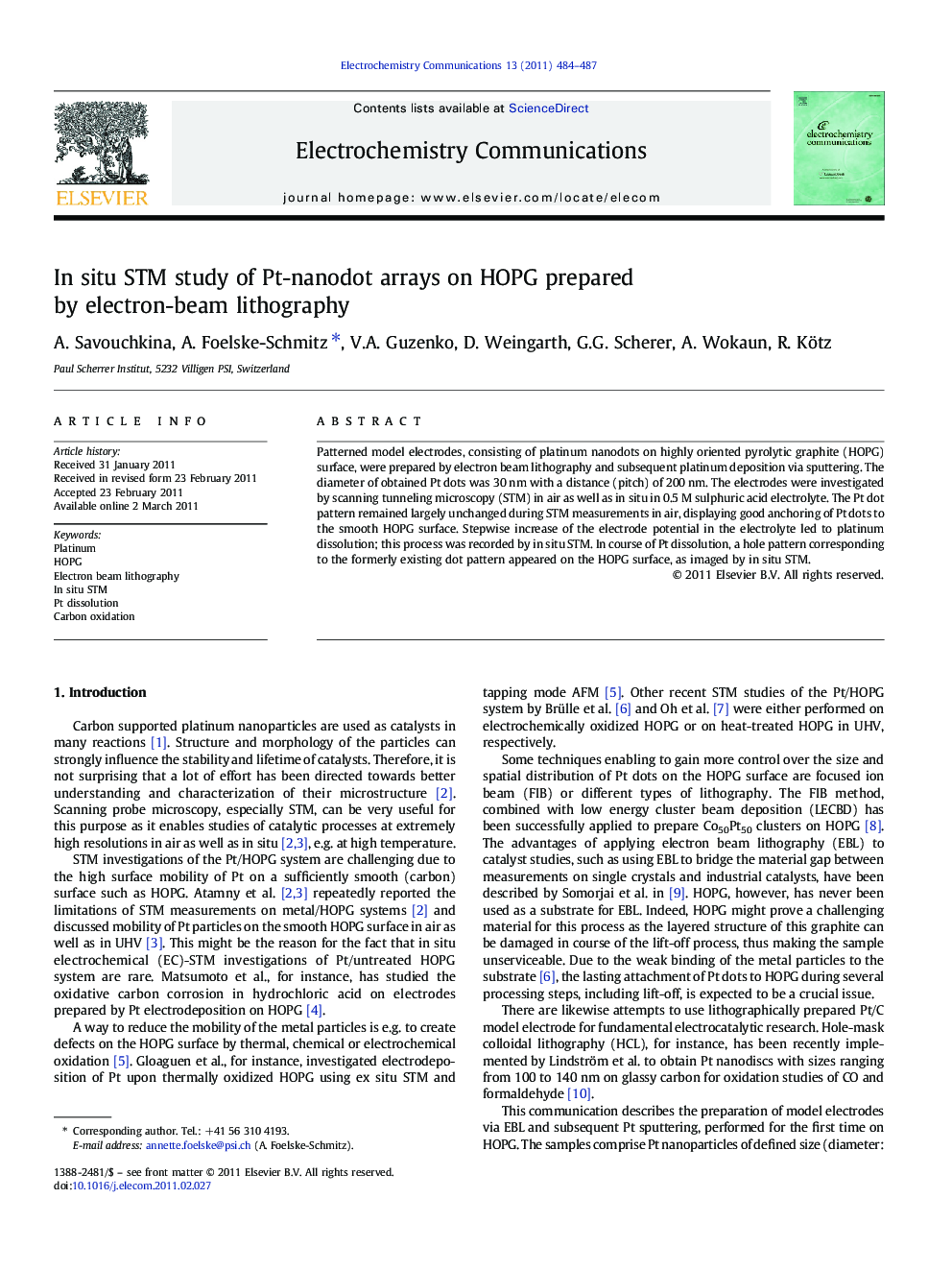| Article ID | Journal | Published Year | Pages | File Type |
|---|---|---|---|---|
| 180090 | Electrochemistry Communications | 2011 | 4 Pages |
Patterned model electrodes, consisting of platinum nanodots on highly oriented pyrolytic graphite (HOPG) surface, were prepared by electron beam lithography and subsequent platinum deposition via sputtering. The diameter of obtained Pt dots was 30 nm with a distance (pitch) of 200 nm. The electrodes were investigated by scanning tunneling microscopy (STM) in air as well as in situ in 0.5 M sulphuric acid electrolyte. The Pt dot pattern remained largely unchanged during STM measurements in air, displaying good anchoring of Pt dots to the smooth HOPG surface. Stepwise increase of the electrode potential in the electrolyte led to platinum dissolution; this process was recorded by in situ STM. In course of Pt dissolution, a hole pattern corresponding to the formerly existing dot pattern appeared on the HOPG surface, as imaged by in situ STM.
Research highlights► Electron beam lithography can be used to produce Pt nanodot arrays on HOPG. ► These arrays are suitable for in situ STM studies. ► The nanodots do not move in air or in H2SO4 at a constant potential (0.7V vs. SHE). ► Applying more positive potentials leads to graduate disappearance of the dots. ► At 1.9 V vs. SHE the dots are replaced by a corresponding hole pattern.
